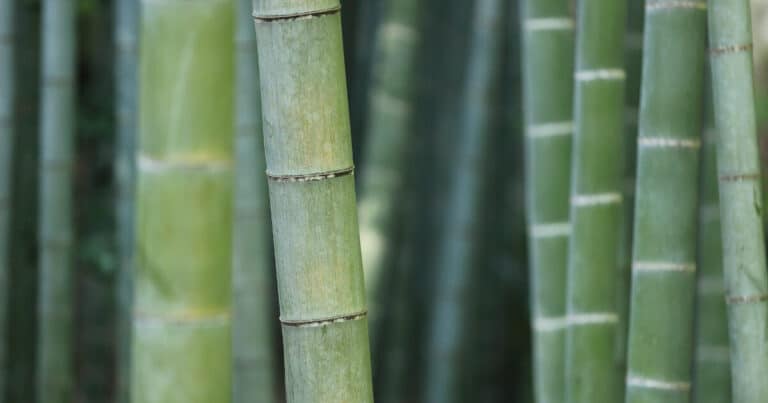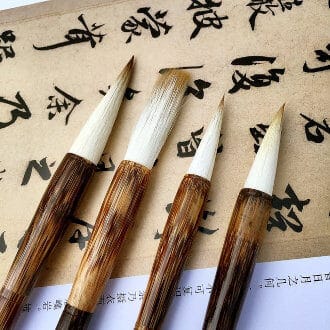By Alina Sterenfeld – The versatility of bamboo has been a boon to world of sustainability and is leading the way as an alternative for common items, ranging from textiles to toothbrushes to furniture and flooring.
What is Bamboo?
Bamboo is a type of woody grass that belongs to the family Poaceae. It is an umbrella term that encompasses a wide range of species (over 1,400) within the subfamily Bambusoideae.
Bamboo is characterized by its hollow stalks, or culms, essentially the “trunks” of the bamboo plant and separated by nodes. It’s most often found in tropical and subtropical regions, predominantly in East and Southeast Asia where it has a deep-rooted cultural and economic significance, but can also be found in South America, Australia, and other regions.
Why is Bamboo Sustainable?
Bamboo is eco-friendly for a number of reasons:
1. Carbon Sequestration
Bamboo is one of the fastest-growing plants in the world, with some species growing up to 91 cm (36 inches) in only 24 hours. This rapid growth translates into an efficient carbon sequestration, or absorption of carbon dioxide (CO2) from the atmosphere during photosynthesis. Compared to other plants, bamboo can absorb more carbon and produce more oxygen, thereby mitigating climate change and reducing greenhouse gas emissions.
2. Renewable Resource
Bamboo is a renewable resource because unlike trees which need to be replanted after harvested, bamboo grows from the same root system, so after a bamboo stalk is harvested, it simply regrows from that same root. This eliminates the need for extensive land clearing and reduces the pressure on forests. Bamboo is able to regenerate in this way due to a unique rhizome system, or underground network of interconnected stems.
3. Low Environmental Impact
Bamboo cultivation requires minimal water, pesticides, and fertilizers compared to other plants. Additionally, bamboo’s extensive root system helps prevent soil erosion because bamboo roots spread horizontally and vertically into the soil, binding the soil particles together. This creates a dense root mat that helps hold the soil in place which prevents erosion caused by wind or water runoff.
Bamboo Paper Production
The production and manufacturing of bamboo paper is a multi-step process:
- Harvesting and Preparation: First, mature bamboo stalks (3-5 years old) are harvested. The stalks are cut at the base and transported to the processing facility, where they are cleaned and stripped of leaves and branches.
- Extraction of Bamboo Fibers: Next, the harvested bamboo stalks undergo a process called pulping, where the bamboo fibers are separated from the rest of the plant material. Various methods can be used for pulping, including mechanical pulping, chemical pulping, or a combination of both. Mechanical pulping involves mechanically grinding or crushing the bamboo stalks to separate the fibers, while chemical pulping involves the use of chemicals to break down the bamboo into fibers.
- Fiber Treatment: After the pulping process, the extracted bamboo fibers are treated to remove various impurities, such as lignin and hemicellulose, which can affect the quality and appearance of the paper. This treatment process typically involves bleaching and washing the fibers.
- Paper Formation: The treated bamboo fibers are then mixed with water to create a pulp slurry. This mixture is then formed into a thin layer across a conveyer belt and any excess water is drained away.
- Drying and Finishing: The formed bamboo paper then begins the drying process. Once the paper is dry, it is passed through various finishing processes, such as calendering (smoothing and compacting the surface), coating (for added strength or enhanced printability), and cutting into desired sizes and shapes.
- Packaging and Distribution: The final step involves packaging the bamboo paper into suitable formats for distribution, such as reams or rolls. The paper is then ready to be shipped and used for various applications, such as printing, writing, or packaging.
What Are the Possible Downsides of Bamboo?
Despite its eco-friendly nature, it’s important to note that bamboo might not always be the most sustainable option. For example, if the final destination of the bamboo is thousands of miles from its original source, then the carbon footprint of the transportation can be significant.
Additionally, the increasing demand for bamboo products can lead to unsustainable farming practices which include over-farming. Over-farming consists of clearing natural habitats to plant an excessive amount of bamboo, and thus disrupts the local biodiversity in the region. Also, unsustainable farming practices can include the harvesting of immature culms, so that they are removed before reaching maturity, thereby hindering the ability of the bamboo to regenerate and sustain its population.
Religion and the Versatility of Bamboo
In his paper “Bamboo Paper Production and Religious Use by the Lanten Yao in Northern Lao PDR,” Claudio O. Delang expounds on the religious significance of bamboo paper for the Lanten Yao. For religious practices and ceremonies, only bamboo paper is allowed to be used. It is primarily used for ritual books, decoration of altars, and to be burned as a means of inviting the spirits.
Bamboo paper acts as the cultural fabric – both metaphorically and physically – for the Lanten Yao, an ethnic subgroup of the Yao who have their own distinct cultural practices and traditions, and primarily reside in Laos and northern Thailand.
Delang writes:
Religious events are the only ceremonies where the whole village – the haves and the have nots – participate. As such they are important in cementing the social fabric in Lanten villages. The Lanten might move from one village to another, according to the particular circumstances of their life-cycle, but they will always stay in a Lanten environment. Religion is the final barrier of their ethnic frontier, and as such, it might be the most treasured part of their cultural heritage. Bamboo paper, as the only paper that can be used in such ceremonies, and – when it is burned – as the means to communicate with the spirits of the phenomenal world, has an essential role in such ceremonies.
Featured image source






